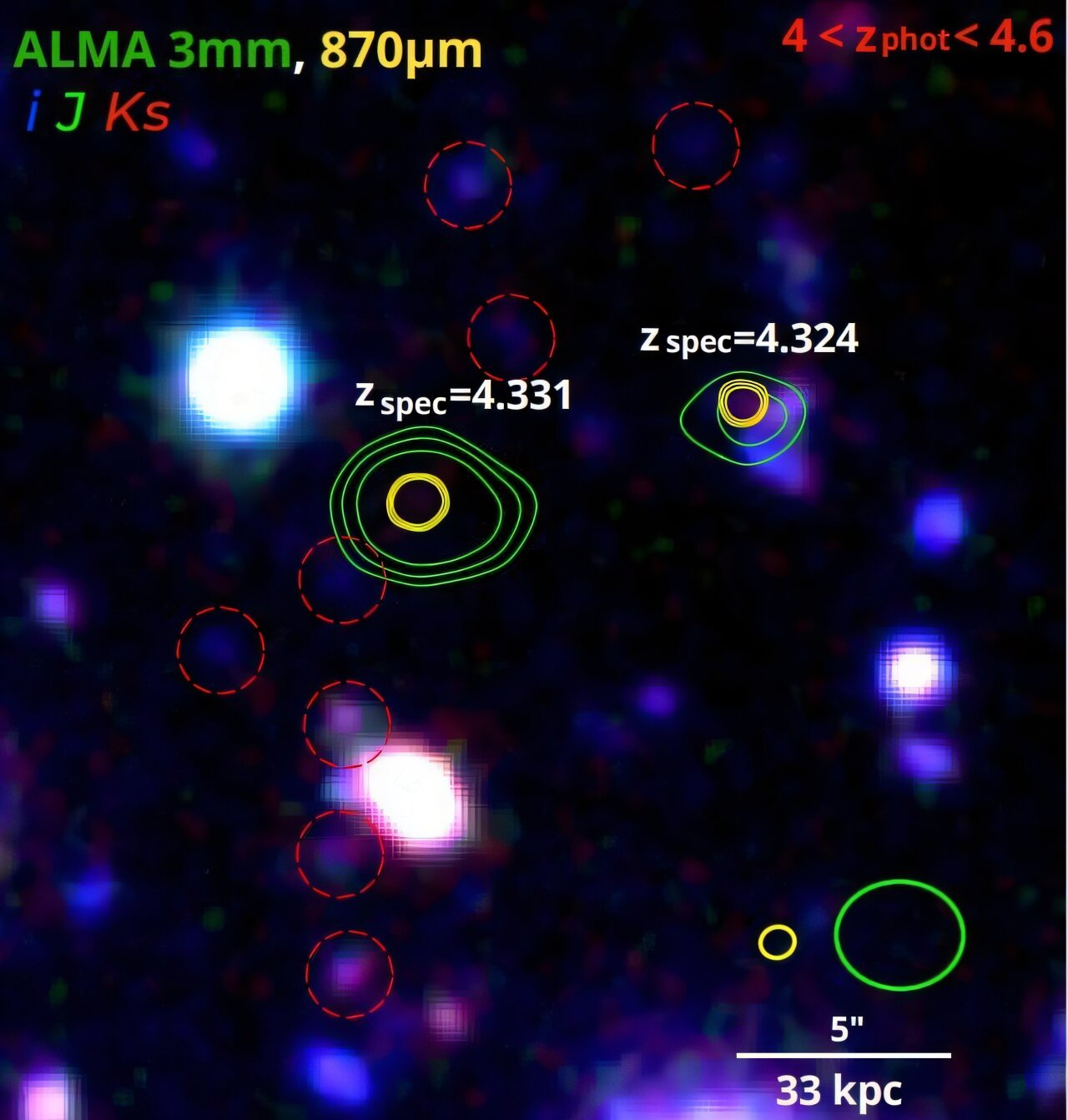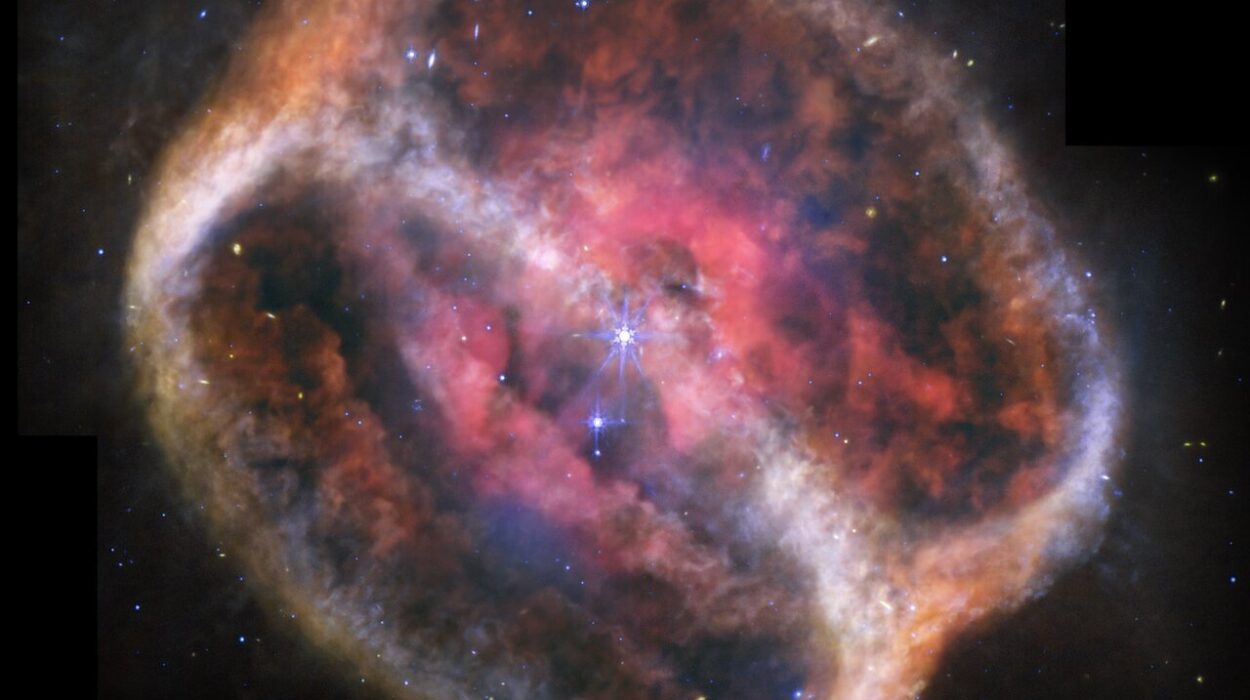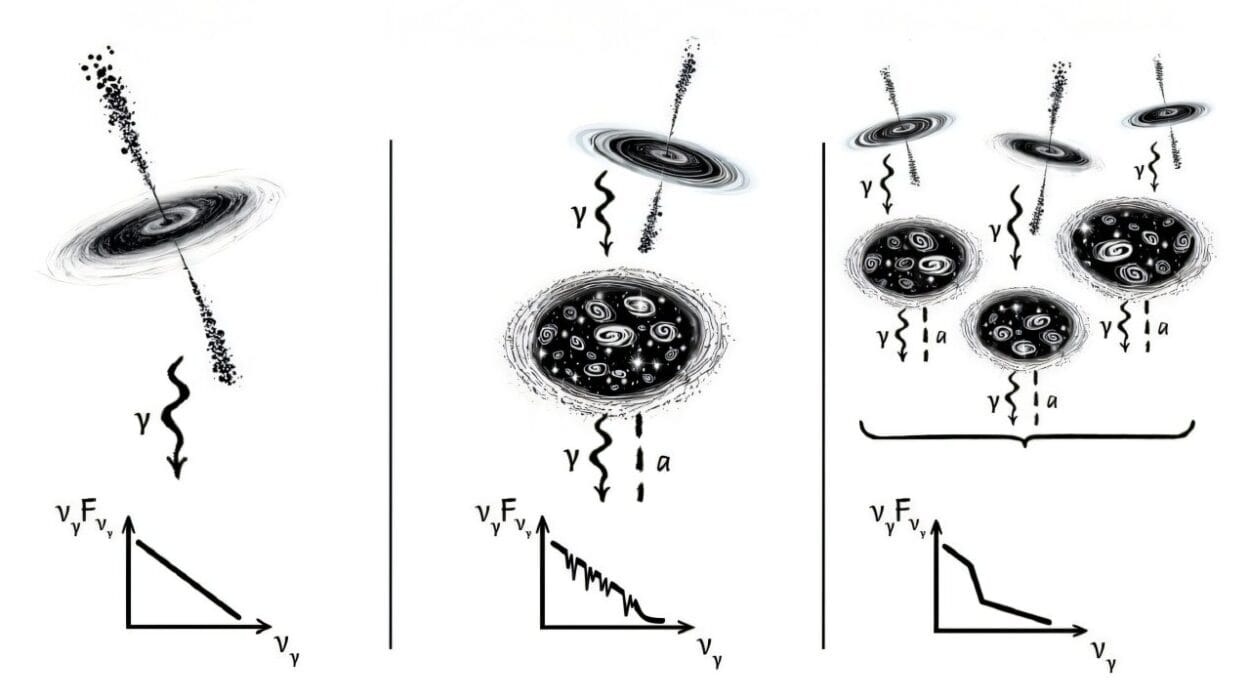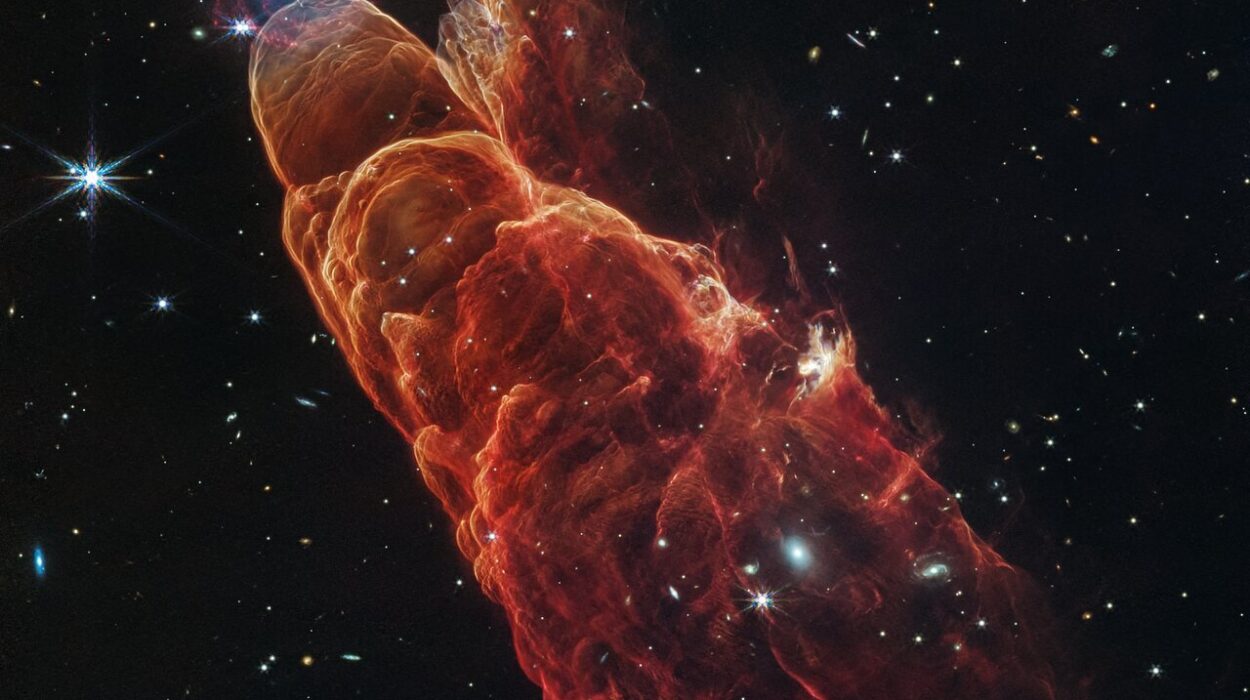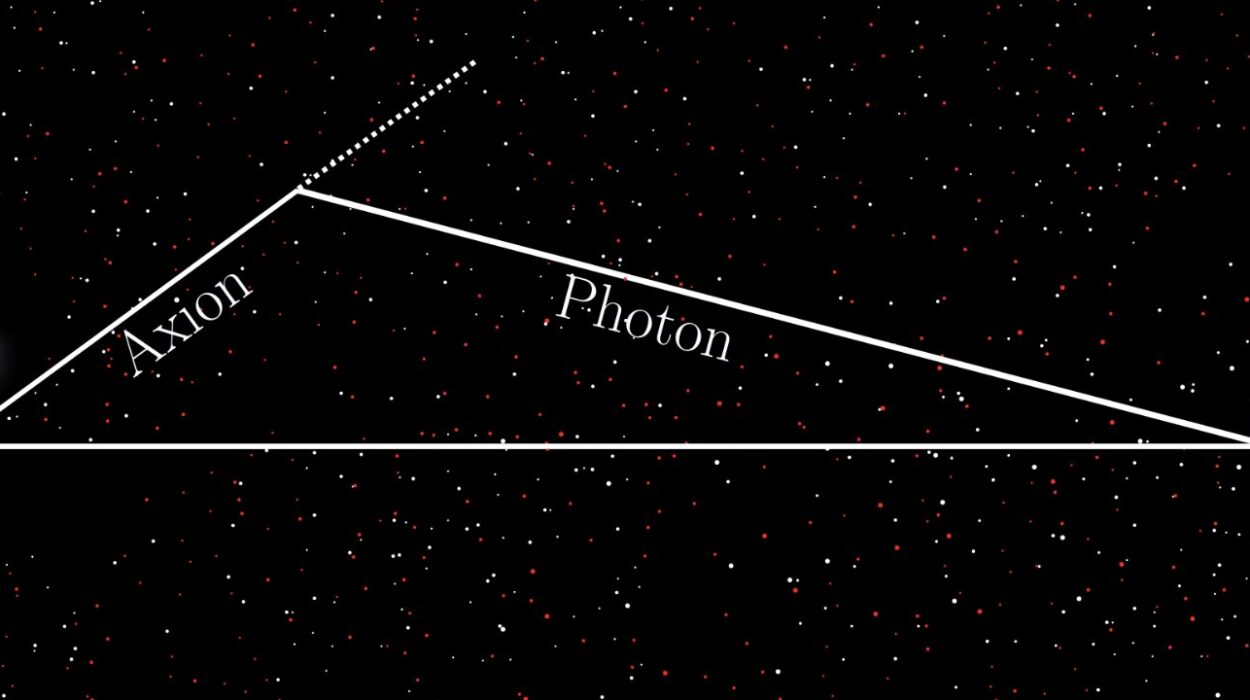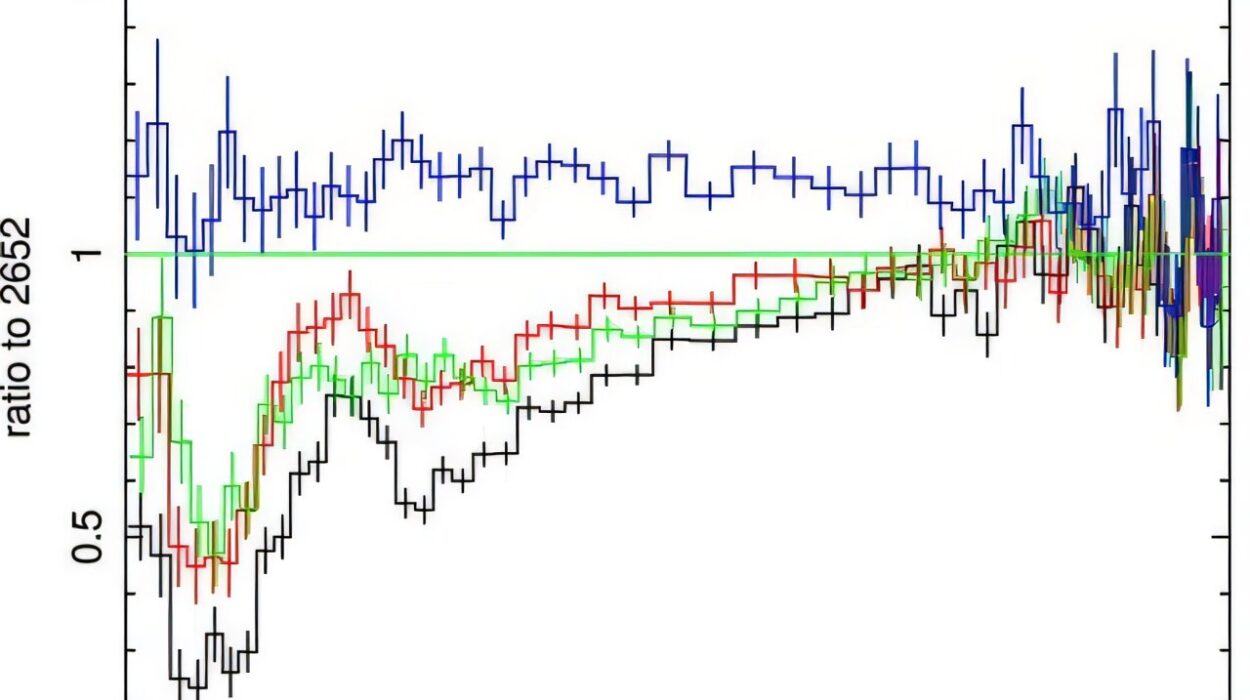An international team of astronomers, led by Malte Brinch from the Technical University of Denmark, has made a groundbreaking discovery of a new compact galaxy group, designated CGG-z4, using the Atacama Large Millimeter/submillimeter Array (ALMA). This discovery, published on January 9th, 2025, on the pre-print server arXiv, sheds light on an unusual set of galaxies that could offer valuable insights into the early stages of galaxy cluster formation.
A New Galaxy Group on the Cosmic Horizon
Galaxy groups are fundamental structures in the cosmos, being the smallest aggregates of galaxies that typically contain anywhere from a handful to up to 50 members. These groups represent critical environments for understanding how galaxies interact, evolve, and grow, particularly when overdense structures—such as protoclusters or galaxy groups—are present. These overdense regions act as excellent laboratories for studying galaxy growth and cluster formation, making them key to our understanding of cosmic evolution.
The group CGG-z4 is a striking discovery for astronomers, located in the Cosmic Evolution Survey (COSMOS) field. This vast region is one of the richest sites for deep-sky studies, offering astronomers a view into the past, more than 12 billion years ago, at a redshift (z) of approximately 4.3. The finding of CGG-z4 unveils a relatively small but highly significant region in the sky, which hosts 13 galaxies within a space measuring about 13 by 31 arcseconds.
The Characteristics of CGG-z4
The galaxy group CGG-z4 exhibits fascinating features, revealing key insights into the evolution of early galaxy groups. It has a stellar mass of around 100 billion solar masses, a respectable size compared to other galaxy groups studied at such high redshifts. However, perhaps the most intriguing aspect is its dark matter halo. The dark matter component of CGG-z4 is estimated to be more than one trillion solar masses, a mass that suggests this group harbors the potential to evolve into a massive galaxy cluster in the future.
The group also shows a remarkable star-formation rate: about 2,837 solar masses per year. This high star-formation activity provides valuable clues about the formation processes of early galaxies. The rate at which CGG-z4 is churning out new stars is an indicator of the environmental conditions that helped shape its galaxies.
Two Dark Galaxies and Their Star-Formation Efficiency
Among the 13 galaxies in CGG-z4, two stand out for their unusual properties: CGG-z4.a and CGG-z4.b. These two galaxies are optically and near-infrared dark—meaning they do not emit visible light at these wavelengths—but they are actively forming stars at a much higher rate compared to other similar objects. Both of these galaxies are packed with vast reservoirs of gas, essential for stellar creation. Their stellar masses are large, and they have short gas depletion times of roughly 100 million years, indicating how rapidly they are consuming their gas to form new stars.
What makes this particularly significant is that these two galaxies exhibit high star-forming efficiencies, meaning they are able to convert a substantial portion of their available gas into new stars. The short gas depletion times suggest that their star formation could soon experience a significant slowdown—a process known as quenching. Quenching refers to the gradual cessation of star formation as the gas required for it gets exhausted. This leads scientists to believe that CGG-z4.a and CGG-z4.b are at a critical point in their evolution. In fact, they are expected to grow two times more massive and may soon transition to a quiescent phase around a redshift of 4.0.
The Future of CGG-z4: A Forming Cluster
From a cosmic perspective, the discovery of CGG-z4 is more than just the identification of a group of galaxies—it provides a glimpse into the future of galaxy clusters. According to the team’s study, CGG-z4 appears to be on the verge of forming a massive galaxy cluster. The astronomers note that CGG-z4 is expected to grow into a cluster comparable to the Virgo or Coma clusters—two of the largest known clusters in the nearby universe—over the next 10 billion years.
Using simulations, the researchers suggest that CGG-z4 is in the process of transitioning into a protocluster, a structure that will eventually evolve into a galaxy cluster with a mass exceeding 10^14 solar masses by z ∼ 0, or the present day. The two massive dusty galaxies (CGG-z4.a and CGG-z4.b) that stand out in the study are expected to play crucial roles in this process, likely forming the brightest cluster galaxies (BCGs) as the cluster grows. BCGs are typically the most massive, central galaxies in large galaxy clusters, and their formation is intricately linked to the larger dynamics and evolution of their parent clusters.
The Need for Follow-Up Observations
The current findings, while exciting and highly informative, are not yet complete. The astronomers behind the discovery of CGG-z4 call for follow-up observations to improve the completeness of the galaxy group’s membership. This means further observational efforts will be needed to ascertain the full extent of CGG-z4’s structure and refine its properties. Such observations will help confirm the group’s membership and potentially uncover more about its formation, growth, and future evolution.
Significance of the Discovery
The discovery of CGG-z4 using ALMA opens a new chapter in the study of galaxy evolution and cluster formation. It underscores the power of advanced observational tools like ALMA in revealing previously hidden aspects of the early universe. ALMA, operating in the millimeter and submillimeter wavelengths, is particularly adept at identifying dusty and gas-rich galaxies that may be obscured in optical and near-infrared wavelengths. These types of galaxies are often responsible for intense star formation in the early universe and are thought to be crucial to the processes that lead to the formation of massive galaxy clusters.
The finding also highlights the evolutionary stages of massive galaxy clusters, which is a major area of interest for astronomers. By studying groups like CGG-z4, researchers can gain insights into the physics of galaxy formation, the role of dark matter in structure formation, and how galaxies transform as they merge and interact within clusters. Understanding the processes that govern such early structures could provide answers to broader questions about the growth of the universe itself.
Conclusion
The discovery of CGG-z4, a compact galaxy group identified by ALMA, offers an exciting glimpse into the early stages of galaxy and cluster formation. With its remarkable features—such as two optically dark, star-forming galaxies, a significant dark matter halo, and a high star formation rate—CGG-z4 is poised to evolve into a massive galaxy cluster over the next 10 billion years. The presence of galaxies with short gas depletion times suggests they are approaching a quiescent phase, potentially forming the brightest cluster galaxies in the future. This discovery not only sheds light on the dynamics of early galaxy evolution but also highlights the power of advanced observational tools like ALMA in probing the distant universe. As astronomers conduct follow-up observations, CGG-z4 will undoubtedly contribute valuable insights into the formation and growth of galaxy clusters, offering a deeper understanding of the universe’s large-scale evolution.
Reference: Malte Brinch et al, Revealing the hidden cosmic feast: A z=4.3 galaxy group hosting two optically dark, efficiently star-forming galaxies, arXiv (2025). DOI: 10.48550/arxiv.2501.05288
